
They may look like they’re straight out of The Muppet Show but have no doubt: this bird is very much real. A mix between an owl and a nightjar, the potoos (family Nyctibiidae) are nocturnal birds that can be found perched in open forested habitats with scattered trees in Mexico, Central and South America, and the Caribbean.
There are seven species of potoos, which can grow anywhere from eight inches to just under two feet long. They all typically have large heads, short necks, long bodies, and small, curved bills, resembling nightjars and the frogmouths of Australasia. But by far, their most defining feature is their massive googly eyes, lending them an out-of-this-world derpy appearance.
The bird that likes to pretend its a tree branch
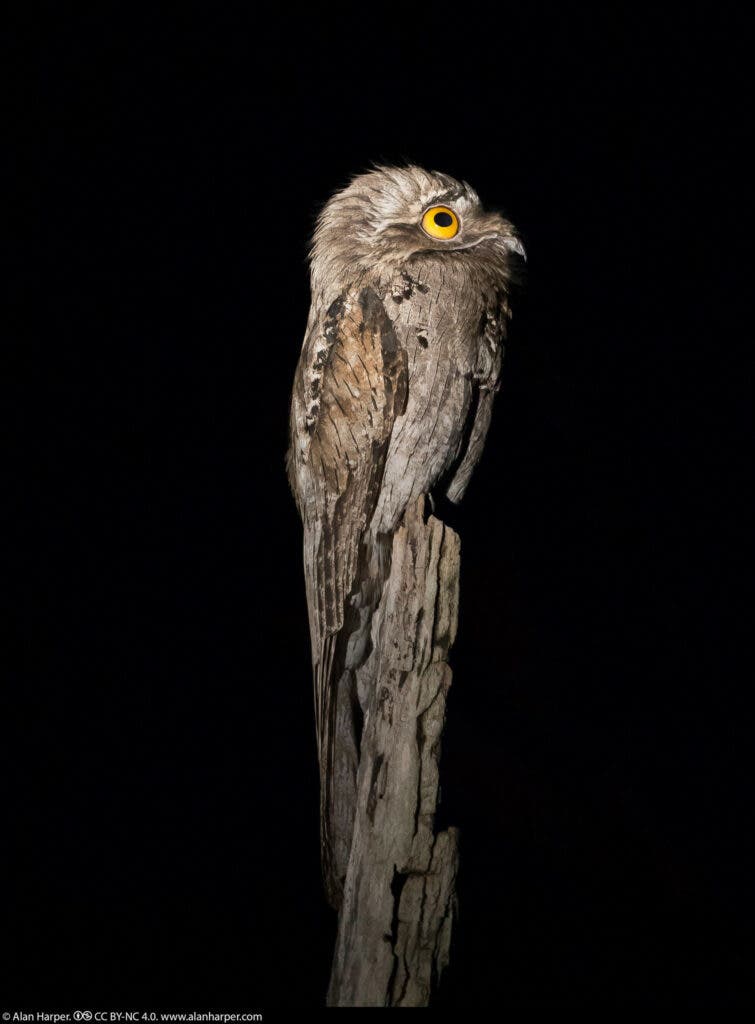
In the daytime, potoos like to stay perched high up in trees where they blend in with the foliage thanks to their gray and brown plumage that provides perfect camouflage, resembling tree bark. They’re extra hard to spot due to their tendency to stay completely still with their heads stretched out vertically and their eyes closed, making them look even more like stumps. Potoos learn the art of camouflage as baby nestlings from their parents, whom they imitate.
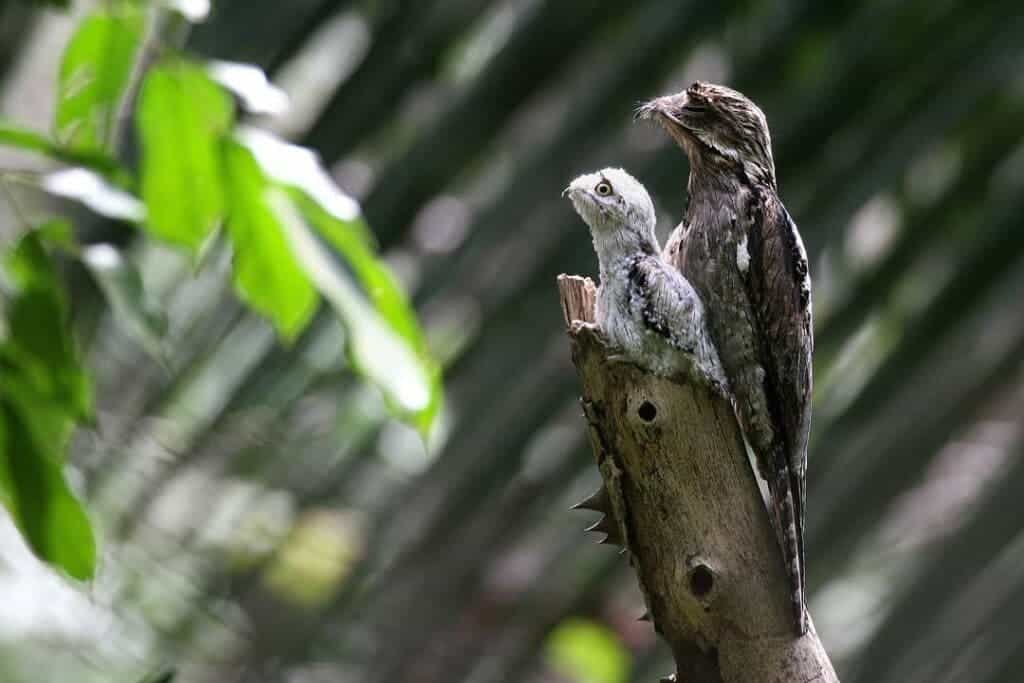
But even though their eyes are shut, they can still locate prey or predator threats with a ‘third eye’ of sorts — small slits located on the upper eyelids that allow the birds to sense movement.
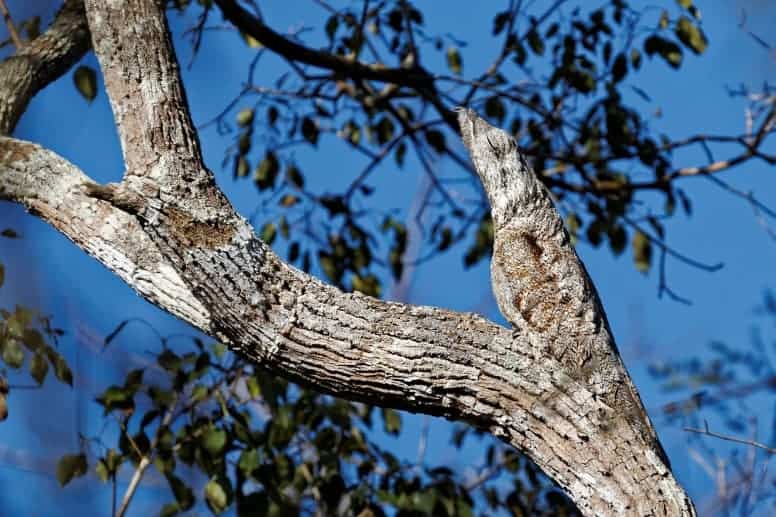

At night, these wacky-looking birds become much more animated, flying from tree to tree on the lookout for tasty insects, although they occasionally hunt bats and even small birds. When an insect is detected below their perched position, the potoos dive towards their prey with their mouths open, swooping down and consuming their meal in one go. That big mouth is no accident, but rather an excellent adaptation to hunting flying insects. Meanwhile, the dorky eyes offer unparalleled night vision.
Each species of potoo has a unique call, ranging from the nerve-wracking roar of the Great Potoo to the much more melodic song of the Common Potoo.
Perhaps surprisingly, potoos are quite old. Paleontologists have found potoo fossils from as far back as 50 million years ago and in places like France and Germany, far away from the range of modern potoos that enjoy the tropical weather of Central and South America. A 1996 study of the potoo mitochondrial DNA doesn’t support the previously held assumption that they are related to oilbirds and found a great deal of divergence between different species of potoos, further cementing the notion that this genus is quite old.
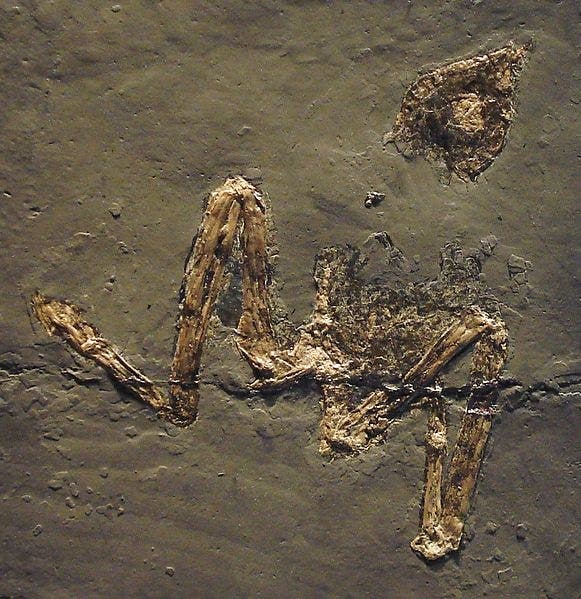
Many potoo species seem to form monogamous pairs, mating for life. Not much is known about their courting and breeding behaviors, though. That’s mainly because there is little sexual dimorphism (difference in form between individuals of different sex in the same species), so ornithologists find it challenging to identify mating pairs with the added challenge of their elusive nature.
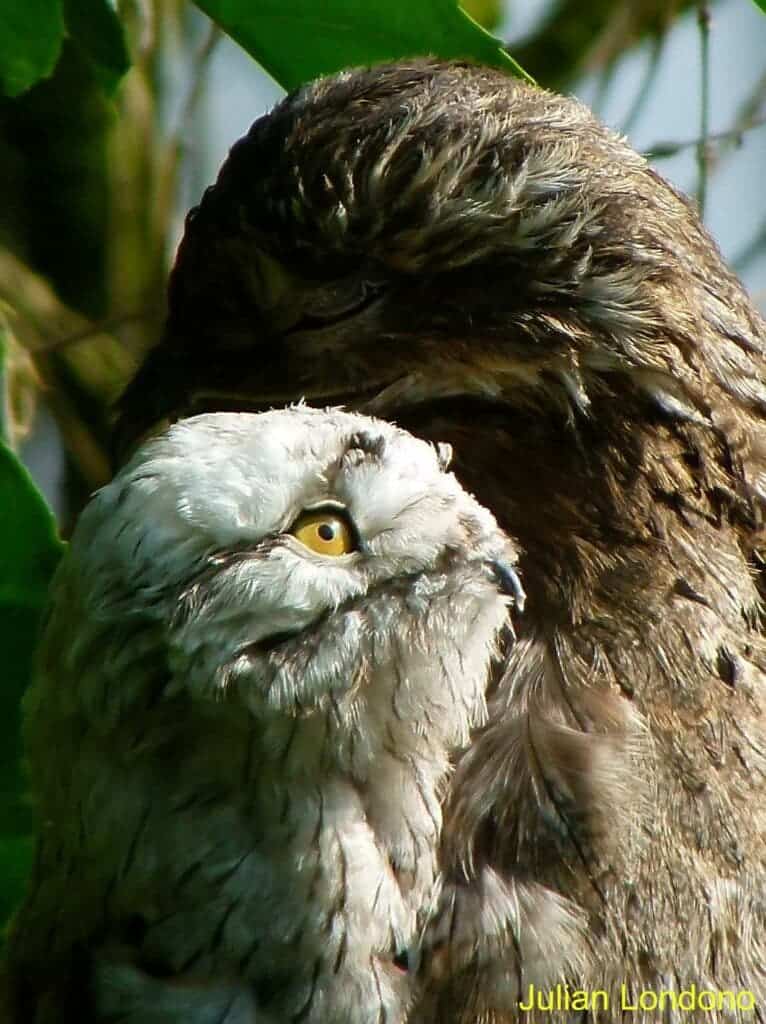
What biologists seem fairly certain of is that, unlike many other birds, they never build nests. What they do instead is they usually find a hole or depression in a broken-off tree branch that’s wide and deep enough to hold their eggs. The female also meticulously cleans this spot, removing all poop from their chicks to make it hard for predators to locate them by smell.
Potoos are pretty freaking awesome. Next time you’re on an Amazon adventure, watch for them on a moonlit night and listen for their eerie calls. You might just get lucky and spot one.


